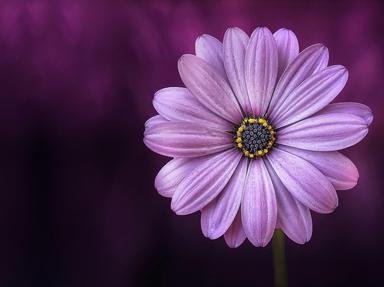Quiz Answer Key and Fun Facts
1. Glancing at the tag, you see you orchid is a 'phalaenopsis' orchid. This one has four firm fleshy green leaves and a single spike supporting eight pristine white blossoms and two buds.
It looks very healthy, but you'll soon fix that. You put it in the worst possible place:
2. Now, let's go ahead and re-pot it into something completely unsuitable. What might that be?
3. Now you've put your orchid in a very unhealthy pot, which makes you smile.
Nevertheless you really want to do this wrong, so you're going to place your orchid in the following medium:
4. Placing your orchid in the wrong medium has marked it for a slow death, but you're not the patient sort. You decide to give it an extra push towards the grave by making sure that the medium is always:
5. Disappointingly, nothing has fallen off your orchid yet. You'd really like to see a leaf or two go rotten and drop off, so to help this process along you make sure that there is always water sitting where?
6. Despite the scorching, drowning and rotting, you feel that a certain something is lacking.
You decide to put the orchid in close quarters with a houseplant infested with the following orchid parasites:
7. Looks like your destructive efforts are being rewarded! You notice that instead of opening normally, the unopened buds on your orchid are doing what?
8. This could be victory! All the flowers have fallen off, and there's just a big naked spike sticking out of the leaves. Is it possible that it's finally dead? (Please, let it be dead....)
9. Casting your eyes upward, you beg for a sign that will tell you your orchid is unquestionably on its way to the big hanging basket in the sky. With tender cruelty you remove it from its pot and examine it. What do you discover that confirms beyond doubt that your orchid is in a critical condition?
10. It's been over a month. You're glad you can't feel plants' pain because this orchid is clearly hurting. The leaves are thin and droopy, and the newest leaf in the crown has turned black. On the backs of the leaves there are patches of white fluff and webbing from mealybugs and mites, and the hollow black stumps of rotted roots come apart at your touch.
Made cautious by your previous disappointments, you hold a dark suspicion that it is not yet dead. How will you know when it's really all over?
Source: Author
whoman
This quiz was reviewed by FunTrivia editor
WesleyCrusher before going online.
Any errors found in FunTrivia content are routinely corrected through our feedback system.
